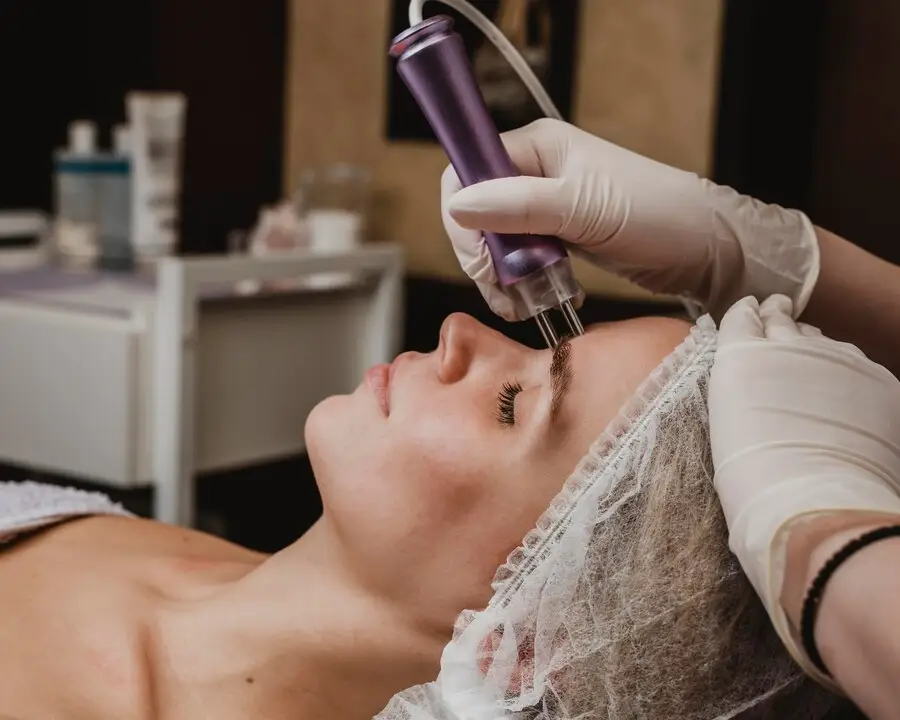Fractional lasers, a complete guide to your skincare regimen
Author: Nulook ExpertiseReview by: -Hello, Beauties! Are you looking for solutions to skin problems like fine lines, wrinkles, acne scars, or pigmentation? If so, fractional laser is the solution. Fractional laser is a non-surgical treatment effective for addressing various skin issues.
In this article, Nulook will thoroughly discuss what fractional laser is, its benefits, the procedures involved, and potential side effects. Let's dive into the details!
What is Fractional Laser?
Fractional laser is a laser technology that works by dividing the laser beam into thousands of microscopic zones that target small areas of the skin at a time. This treatment is similar to repairing or altering a photo pixel by pixel. Fractional laser technology combines ablative and non-ablative laser techniques to address skin problems caused by sun damage and aging.
While ablative lasers only work on the epidermis (surface skin cells) and non-ablative lasers work on dermal collagen (the middle layer of skin), fractional lasers work on both layers. The first fractional laser device marketed was Fraxel®, which emits a 1550-nm non-ablative wavelength.
Read Also: 9 Benefits of Salmon DNA for Skin Regeneration
Benefits of Fractional Laser
Fractional laser offers various benefits for your skin, Beauties. Here are some of them:
1. Reduces Fine Lines and Wrinkles
This treatment is effective in reducing signs of aging such as fine lines and wrinkles by stimulating the production of new collagen in the skin. Collagen is a protein that gives structure and elasticity to the skin, making it appear firmer and younger.
2. Treats Sun Damage
Sun exposure can damage the skin and cause pigmentation. Fractional laser can help reduce this damage and brighten the skin. Excessive UV exposure can cause premature aging and dark spots on the skin. With fractional laser, these issues can be effectively addressed.
3. Improves Skin Texture
If you have scars from surgery or acne, fractional laser can help smooth and even out the skin's texture. Scars often cause the skin surface to become uneven, but with this laser treatment, the skin surface can become smoother and more even.
4. Treats Melasma
Melasma is a condition where dark patches appear on the skin, usually caused by hormonal changes, sun exposure, or genetic factors. This condition often occurs on facial areas such as the forehead, cheeks, and upper lip and can be very bothersome. Melasma is more common in women, especially during pregnancy, hence it is often referred to as the "mask of pregnancy."
Fractional laser can be an effective solution for treating melasma. This laser technology works by targeting the epidermis and dermis layers of the skin, helping to break down the melanin pigment that causes dark patches.
Read Also: 6 Benefits of Facial Skin Booster
5. Reduces Pore Size
Fractional laser treatment is also effective in reducing pore size. Large pores often lead to other skin problems like acne and blackheads. By minimizing pores, the skin appears smoother and cleaner, improving the overall appearance of the skin.
6. Treatment on Other Body Areas
In addition to the face, this treatment can also be used on the neck, chest, and hands, providing uniform results across the body. These areas are often neglected but are also prone to signs of aging and sun damage.
Fractional Laser Procedure
The fractional laser procedure is fairly simple and involves several stages. Here are the usual steps:
1. Assessment and Pre-Treatment Preparation
The doctor will assess the skin condition and determine the areas to be treated. If you have darker skin or pigmentation issues, the doctor may prescribe a whitening cream or chemical peel before the treatment.
2. Topical Anesthesia Application
Before the treatment begins, an anesthetic cream will be applied to the treatment area to minimize pain. The cream is left on for 45-60 minutes until the anesthetic effect is maximized.
3. Fractional Laser Process
After the anesthesia, a lubricant gel is applied to help the laser device move smoothly over the skin. The treatment time varies depending on the area being treated, but for the entire face, it usually takes about 30 minutes. During the treatment, you may feel slight discomfort, but this can be minimized by using a cooling device.
4. Post-Treatment Recovery
After the treatment is completed, the lubricant gel is washed off. Your skin may feel like it has been sunburned for about an hour and slightly swollen for 2-3 days. The skin will have a reddish color for 3-5 days, and within 24 hours, new epidermis will begin to form, giving the skin a bronze appearance that can last up to 14 days. During this healing phase, it's important to use sunscreen with at least SPF 50+ and avoid direct sun exposure.
5. Follow-Up Treatment
To achieve optimal results, four to five sessions of fractional laser treatment are usually needed, with one-month intervals between sessions. The desired results are usually visible within three to four months after the last treatment.
Read Also: Facial Skin Hyperpigmentation: Causes and How to Overcome It
Side Effects of Fractional Laser
Although fractional laser is a relatively safe treatment, some side effects may occur, especially if the treatment is performed aggressively or ablatively. Here are some side effects you should be aware of:
1. Peeling and Crusting
The skin may experience peeling or crusting after the treatment. This is part of the healing process and can be managed with appropriate moisturizers. This peeling helps remove dead skin cells and allows healthier new skin to surface.
2. Swelling
Mild swelling usually occurs and will subside within a week. You can use ice packs or cold water compresses to help reduce this swelling. Swelling is a normal bodily reaction to treatment and typically does not last long.
3. Post-Inflammatory Hyperpigmentation
Although rare, post-inflammatory hyperpigmentation can occur, especially in individuals with a history of melasma or hyperpigmentation. This pigmentation is usually temporary and can be addressed with additional treatments.
4. Infection
Although rare, the risk of infection still exists, especially if proper care is not taken during the healing phase. Therefore, it's important to keep the treated area clean and follow all post-treatment instructions from the doctor.
That's the information about fractional laser, Beauties! This skin treatment technology offers effective solutions for various skin issues like fine lines, acne scars, and pigmentation. With advanced technology targeting both the epidermis and dermis layers, fractional laser can improve skin texture and stimulate new collagen production, making your skin appear smoother, firmer, and brighter.
If you're interested in experiencing the benefits of fractional laser treatment, Fractional Laser Bali from NuLook could be the right choice for you. With cutting-edge technology and an experienced professional team, NuLook offers treatments designed to help you achieve maximum results with guaranteed safety and comfort.
Don't hesitate to contact us today for a consultation and schedule your first treatment. Get your dream skin with fractional laser and see the difference for yourself!
Reference Source:
- https://dermnetnz.org/topics/fractional-laser-treatment
- https://www.byrdie.com/guide-to-fractional-lasers-5087033


